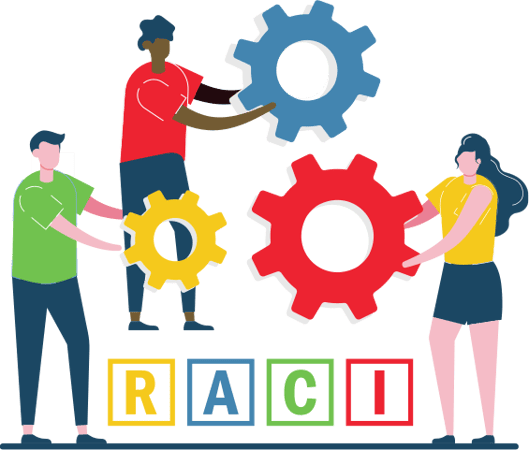By Cassie Solomon, RACI Solutions
I recently did a short podcast for the Digital Project Manager called “Enterprise RACI: Effective Decision-Making at Scale” which you can listen to here. I’m such an extrovert, I love podcasting! And I want to dive into the topic in writing here.
So many organizations feel the pressure to work faster now that McKinsey calls this “the age of urgency”. We can all feel the pace of change in these early years of the 4th Industrial Revolution and it’s extraordinary. Yet McKinsey did a study in 2022 that found that 80 percent of organizations report struggles with decision-making. This has implications for productivity and competitiveness. And morale!
When we think about enterprise-wide change, or culture change, I like to reference the 8 Levers of Change model created by my co-author Greg Shea, and published in our book, Leading Successful Change: 8 Keys to Making Change Work. Our theory is that you need to move at least 4 of the 8 levers in order to ensure the success of your change initiative.
Decision-making is one of those levers, and it is my personal favorite – I call it the “stealth lever” because most of the time, it is invisible in organizations. You can point to your hiring practices, your meeting system, your compensation and reward plans – but you can’t really point to your decision-making culture. And RACI, which is this incredibly simple tool that we can teach people in an hour or two (including practice) turns up these powerful conversations about where the real power lives in an organization. How many people does it take to make a decision? Do the cross-functional decisions bog down and end up sitting back on an executive’s already overloaded plate?
It’s so easy to have a great, conceptual conversation about culture or about decision-making and then leave that discussion without creating anything actionable. That doesn’t create any change. We don’t even have a good way to measure time-to-decision although the tools to make this visible now exist.
We incorporate RACI into all of our strategic planning work, so that at the end of the process, it’s clear which leaders will drive which part of the plan. Together with their teams, we ask them to create the initial implementation plan and timeline. This gives you a big leg-up on strategy execution, because the people who build the implementation plan own it.
At the enterprise level, the big change initiatives cut across many different silos, and that’s where they get stuck because the decision-making is so convoluted. Authority isn’t clear in most cross-functional work which creates the special problems facing those initiatives and teams. And this is where RACI becomes the language of negotiation. So we also bake RACI and role negotiation into our executive coaching. I often say that the higher you rise in your career, the more you need horizontal leadership skills – the skills that allow you to lead without explicit authority – to work with your peers across silos.
“We throw everyone into the deep end after their promotion and say, ‘paddle around and you’re not going to get anywhere and you’re going to die of frustration.” Aren’t you glad you got the big promotion? This is the prize. You no longer have vertical authority much. You’ve arrived on the landscape of the fog of cross-functional work.”
Click through to the podcast to hear two stories – one a successful transformation of a high growth life sciences company, and one about a struggling empowerment change initiative in innovation work at a global life sciences company. Both of them illustrate a good use of RACI to leverage enterprise wide change.



